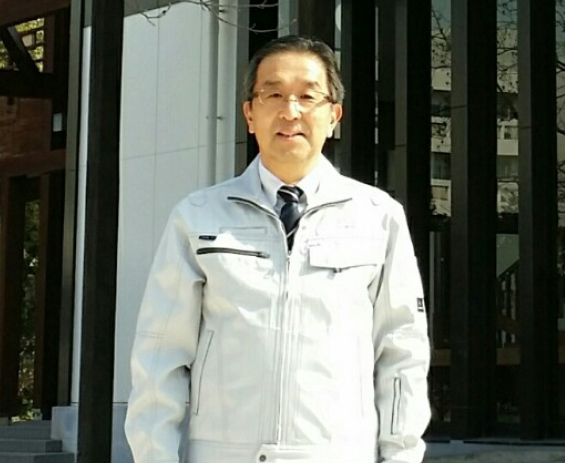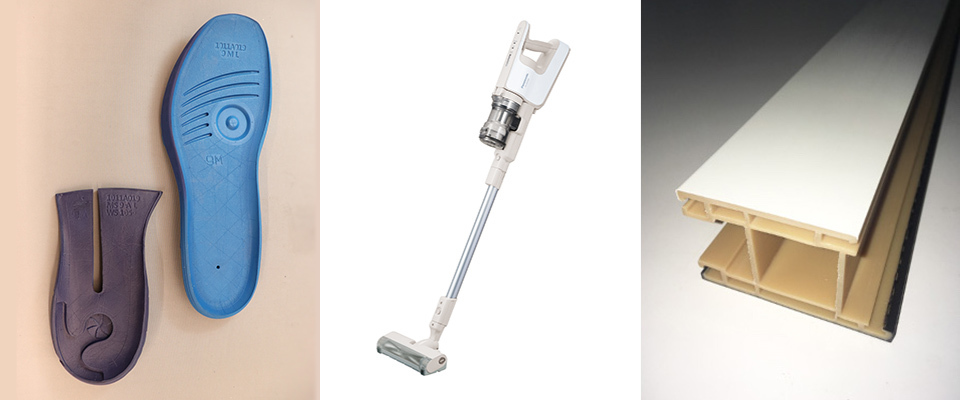Lightweight and super-strong, cellulose nanofiber is an innovative material based on cellulose—a renewable resource from trees and plants—promising a wide spectrum of potential applications in various fields, including the automobile industry.

The NCV project concept car exhibited at the Tokyo Motor Show. Thirteen parts, including the door trim and floor parts, were made with CNF.
To achieve carbon neutrality by the year 2050—a goal declared by the Suga administration last October—technological innovation is imperative. One case illustrative of that effort is the development of cellulose nanofiber (CNF), a new ultra-fine material derived from the cellulose found in trees and other plants. Disentangled on the nano level from natural cellulose, each CNF strand ranges from just four to 20 nanometers thick (1 nm equaling one-billionth of a meter). Compared to steel of the same volume, CNF weighs one-fifth and is eight times stronger. Due to these properties, resin can be reinforced with CNF to produce a high-performance compound material.
Japan has developed various technologies to render CNF-resin production processes more efficient. Research is underway on a multitude of applications for the material, with those for automobiles appearing particularly promising. In 2016, Japan’s Ministry of the Environment launched the Nano Cellulose Vehicle (NCV) project, attracting the involvement of 22 research institutes and companies. In autumn 2019, the project generated buzz by exhibiting a wooden concept car at the Tokyo Motor Show. Thirteen parts of the car (including the hood) were made from CNF resin, reducing the vehicle’s total weight by 16%, while a simulation showed a significant 11% improvement in fuel economy.

Professor Usuki, who led the NCV project, says, “As there is little activity by researchers overseas to mix CNF with resin to make new compounds, Japan could lead in this field.”
Toyota Boshoku Corporation, which has been using plant-derived kenaf fibers in auto parts for many years, was in charge of developing the outer panels and door trim of the NCV concept car. Speaking about the potential of CNF, TSUGE Motoki of the company’s New Value Creation Center says, “You can produce CNF resin with existing manufacturing equipment, avoiding the need to develop new machinery, which is a key benefit of the resin. A wider recognition of CNF’s contribution to cutting CO2 emissions, as well as to reducing costs of production, ought to lead to its more widespread adoption.”

To produce CNF, pulp fibers are extracted from wood and are then micro-refined to the nano-level.
Products employing CNF are already being marketed in other sectors, including such products as sports shoes and home appliances, where light weight and durability are musts. Owing to its excellent thermal resistance, moreover, CNF is highly suited to use in housing, such as in the production of window sashes and glass. Applying the knowledge gained in the NCV project, the Ministry of the Environment is endeavoring to introduce the technology to a wide variety of firms through its Nano Cellulose Matching project.
In order to introduce CNF into automobile manufacturing, further tests are needed to verify its long-term durability and performance in related areas. Nevertheless, the material holds great promise toward achieving a carbon-free society. Professor Usuki says, “The performance of resin can be substantially improved simply by mixing the substance with a small amount of CNF. Moreover, its primary base material—trees—grows all over Japan. Although the realization of lower vehicle weights and low carbonization are perennial issues for automobile manufacturers, I think that CNF is an amazing material that has the potential to achieve both.”

CNF has been utilized in various products already on the market, such as for cushioning in running-shoe soles and the bodies of stick vacuum cleaners. Resin for housing materials is also in development.






























